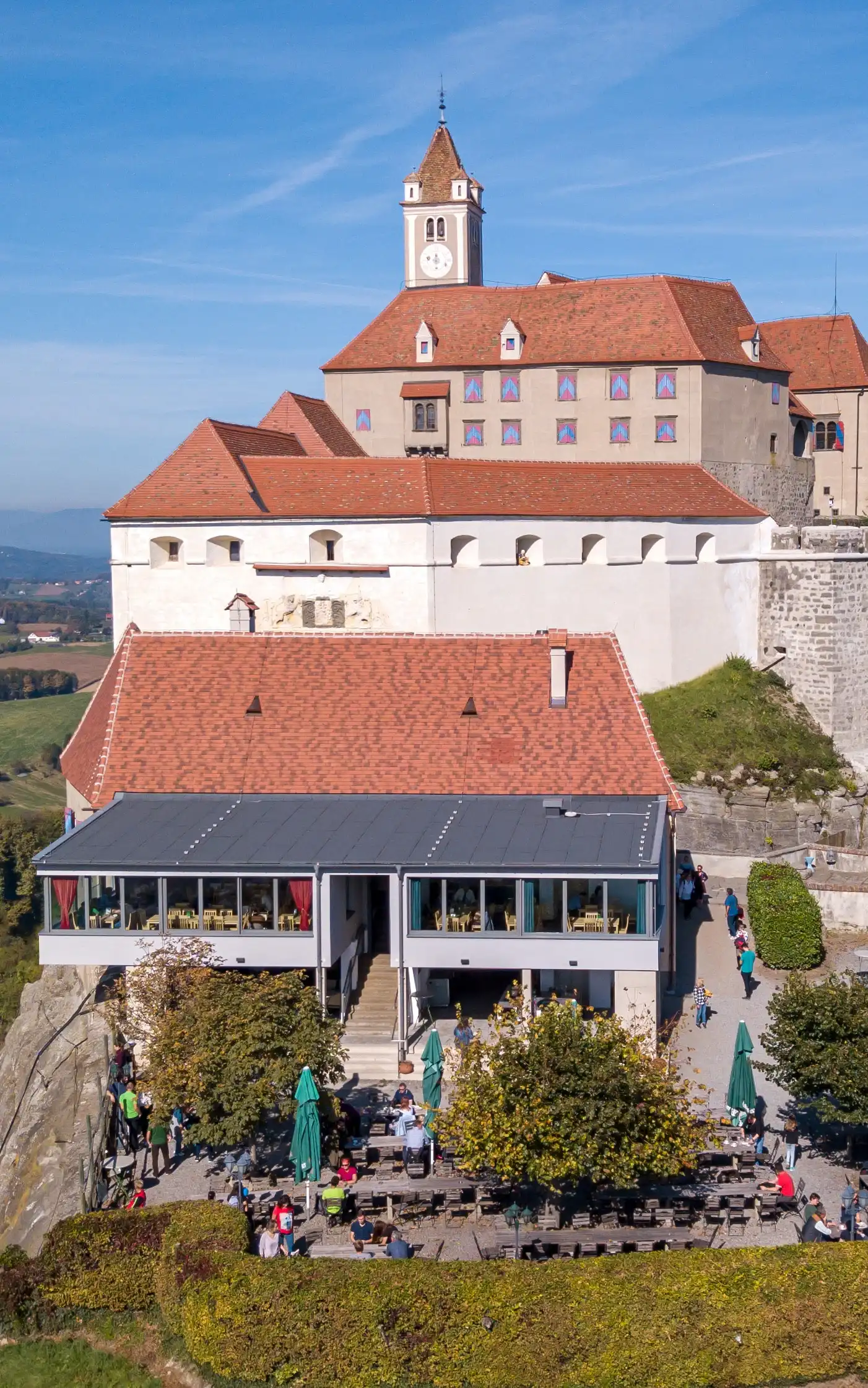Tavern
The building of today’s castle tavern was referred to as the “Fig House” in 1681.
The 17th century was the Baroque era, which originated in Italy. This period was not only marked by an opulent architectural style but also by a fascination with the exotic. Orangeries and fig houses, for example, became status symbols. Fruit trees were brought from Italy and planted either directly in the ground or in containers, which were moved to orangeries or fig houses during winter. This controlled temperature regulation allowed the harvest season for these exotic fruits to be extended for up to six months.
Originally, two buildings stood here, connected by a wall and a wooden gateway. The west-side building served as the residence of the court bailiff in the 19th century. The east-side building housed the court messenger’s quarters and a firewood storage area. Later, it housed a wine press.
In 1945, both buildings were destroyed and were rebuilt as a larger and more modern tavern in the post-war period. After being remodelled several times, the tavern was given its current appearance with the magnificent conservatory, in 2016.
Labelled Image


